Spanish food. What is it? Most would say it is tapas, paella, and sangria. And that is true. You will find all of those things everywhere and every city has its own variations.
What are tapas? Well they are little bites, like appetizers. With a group, you order a bunch and share. Some common tapas include croquets (fried mashed potato with various fillings like cheese and ham), goat cheese with jelly, patatas bravas (roasted potatoes with spicy mayo), other potato dishes, little sandwiches, and fried fish (octopus, cod, sardines). Everywhere does tapas slightly different. The prices can range from 1-4 euros, and the portions are unrelated to the price. But nothing stands out. We went on a good tapas run for Graham’s birthday in Seville, and got tapas out in Ronda.
Paella is, apparently, only good in Valencia. Which is probably true because the two paella attempts we had were overcooked rice that wasn’t seasoned properly.
Sangria is good everywhere. Easy as.
But all the famous stuff is not the essence of Spanish food.
We had the pleasure of doing a cooking class in Seville. This was not a traditional cooking class. We booked with through a website called ‘Travelling Spoon’. This website connects you with a local family and you cook a meal with them and have dinner.
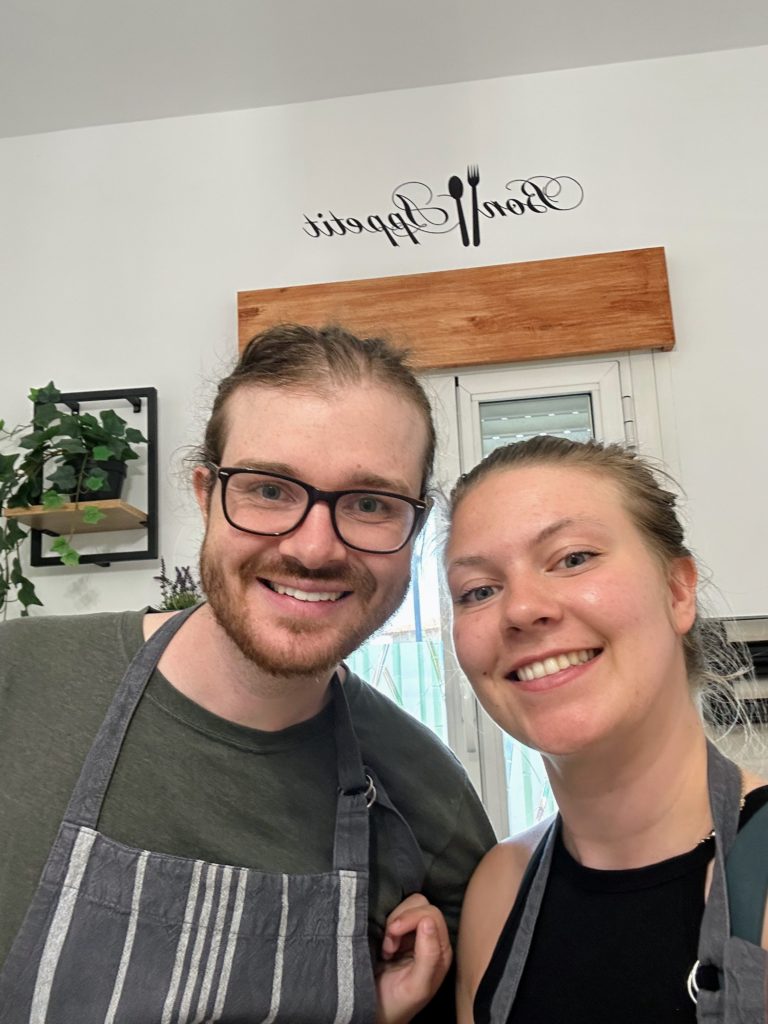
The host family was a couple, Annette and Jose. Annette spoke English (She was from Calgary. Small world) but Jose (From the Basque region of Spain) did not. So Annette was the translator for the evening. We made three dishes with them, with Jose leading the charge.
The first dish was a cold tomato soup called Salmorejo.
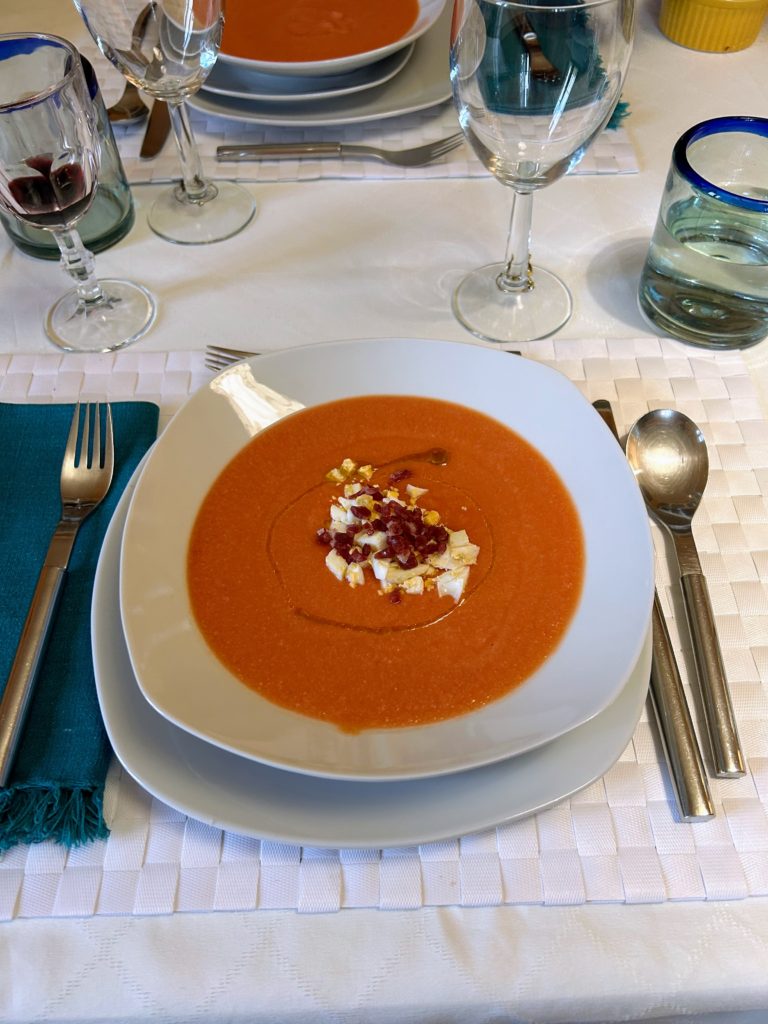
This is a common dish eaten in Spain during the summer months. This dish was very simple and highlights the main ingredient used, tomato. We learned that ingredient simplicity was the main ethos of Spanish food.
We took some tomatoes from the garden and pureed them in the food processor. Then we removed the pulp and skin by putting the mixture through a fine mesh sieve. Cut up some bread and put that into the tomato water to let it soak up the juice. The bread is what thickens the soup. From here you add your seasonings such as garlic and salt and once the bread is soft, you puree the mixture in the food processor until smooth and add olive oil to give it a nice velvety texture. You chill the soup in the freezer or fridge depending on when you are serving it. Top with some olive oil, hardboiled egg, and Iberian ham and you are ready to eat.
I am not a huge fan of raw tomatoes, neither is Graham, so I was anticipating we were going to have to power through something but this dish is very good. It does have an acquired taste if you do not like tomatoes but it was beautiful in its simplicity and highlighted the ingredients well. Very refreshing and I am happy I tried something new.
The main course was fish and potatoes. Again, very simple.
Potatoes and onion were sliced into disks, seasoned generously with salt and olive oil and put into the oven for 45 mins at 200 degrees Celsius. During the wait time we made the soup. After the 45 mins you top the potatoes with a fish (sea bass steaks for us), also seasoned with olive oil and salt. The whole mixture spends another 45 minutes in the oven.
During this wait time, we made dessert. The dessert was similar to French toast and it is called Torrijas.
The first step is to heat milk and sugar on the stove on medium heat. Add a cinnamon stick, lemon and orange peel and let the mixture come to a boil. Once the mixture boils, you pour the mixture over thick slices of baguette. You want the bread to wet. So once the bread is soaking, heat up a pan with a shallow layer of oil and beat two eggs into a bowl.
The the assembly line begins. Take the soaked bread, coat it into the egg and them fry until golden brown. The put on paper towel to remove the excess oil and once cooled, coat in cinnamon and sugar.
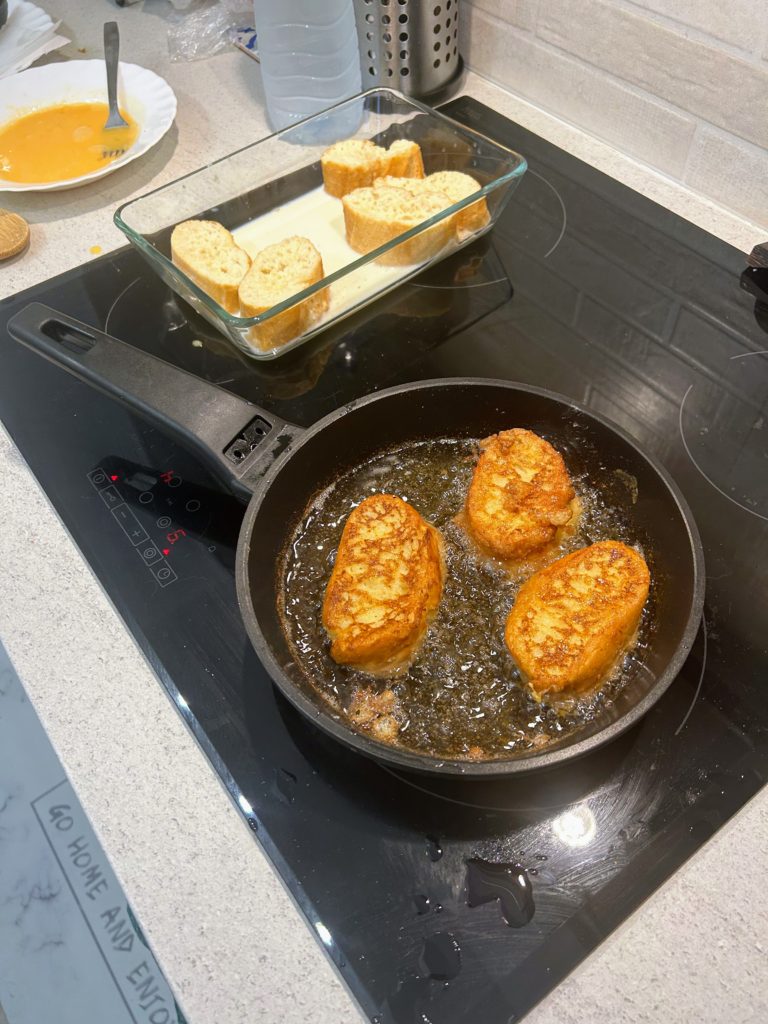
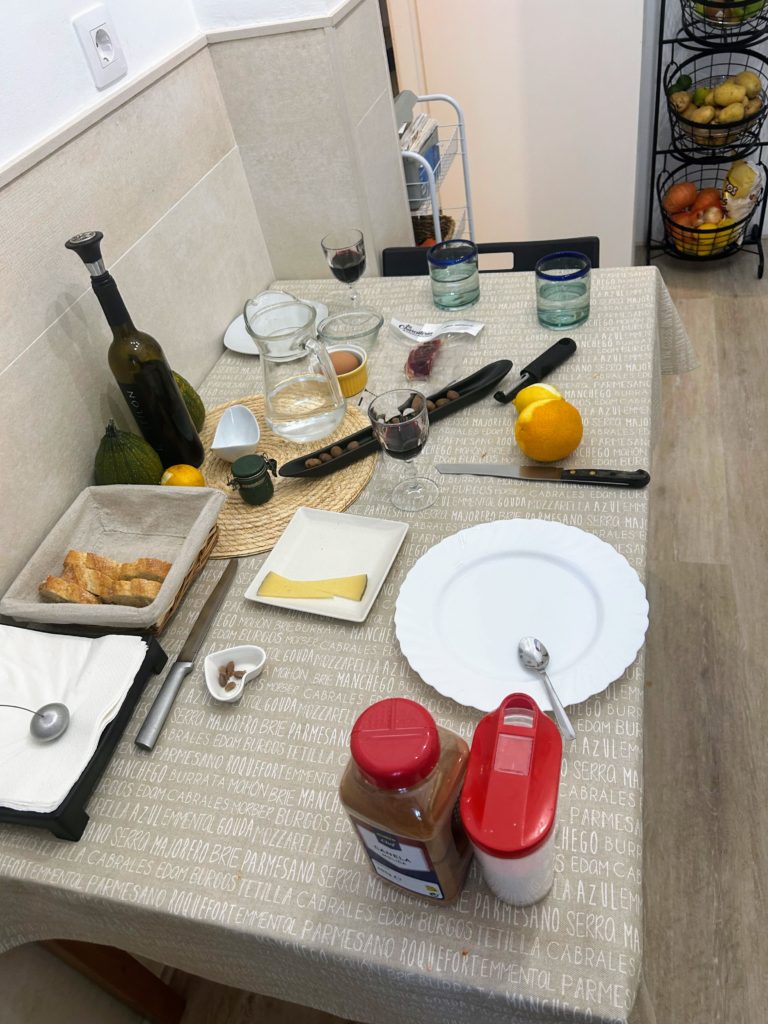

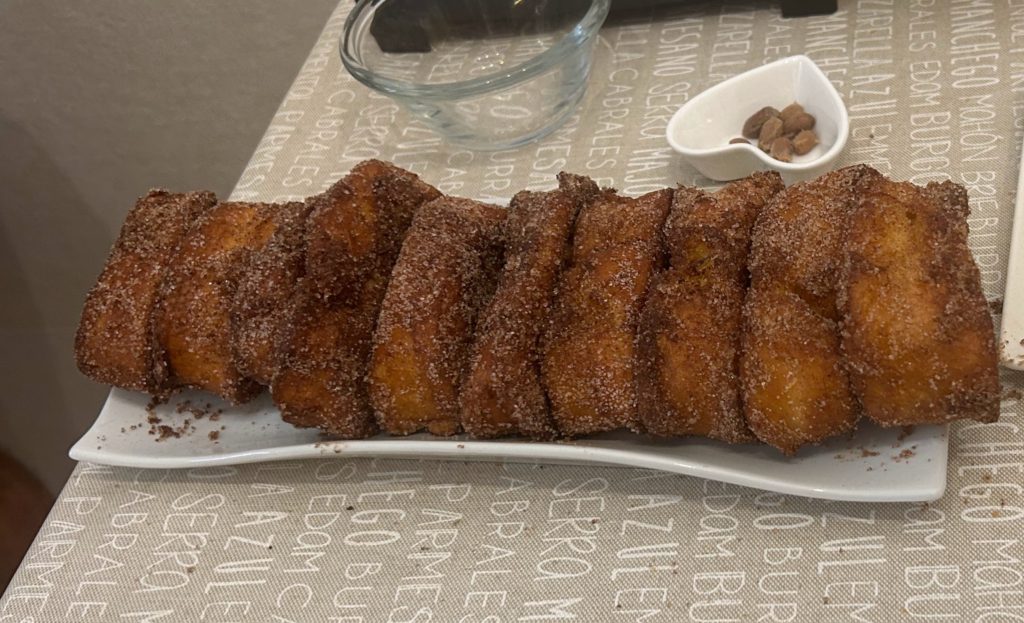
It is served at room temperature and is better the next day after.
The last thing we did is make a sauce for the fish. It was garlic, parsley, olive oil, lemon juice, apple cinder vinegar and salt mashed together in a mortar and pestle. It was very good. The sauce is put onto the fish before the last 10 minutes of cooking.
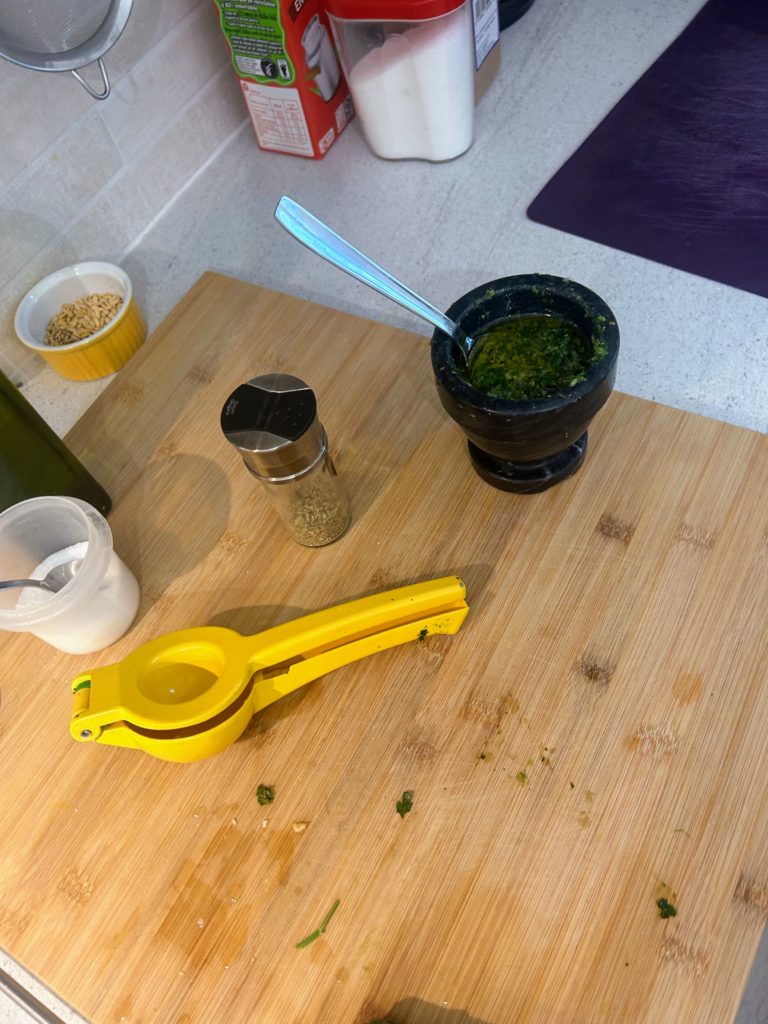

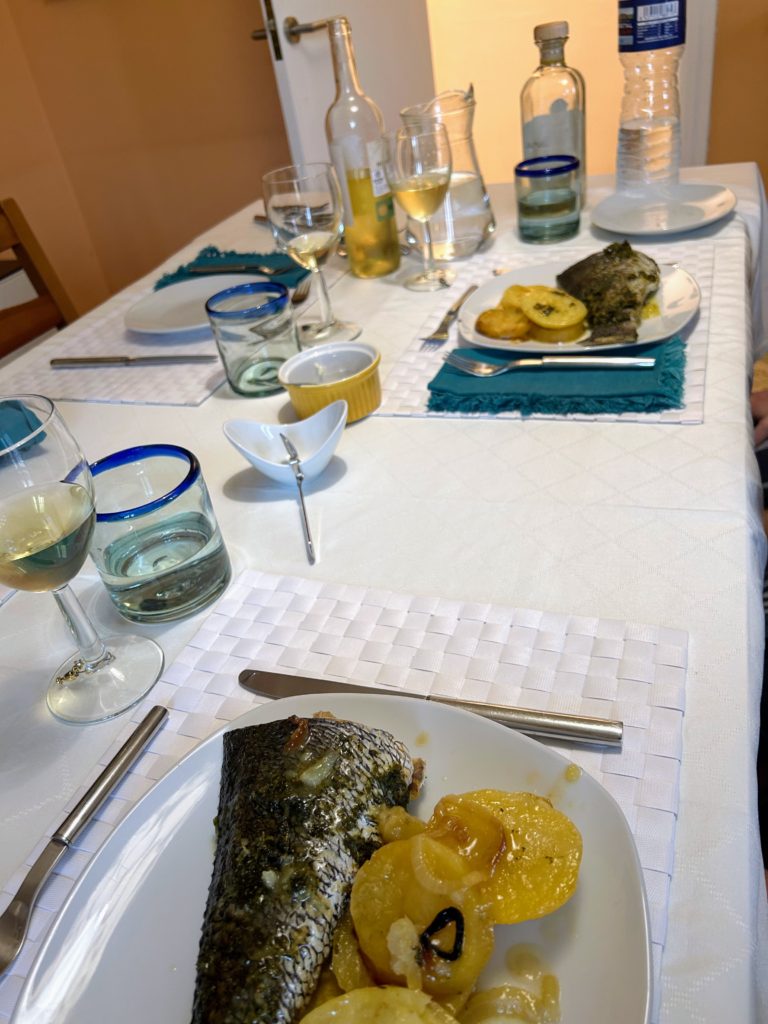

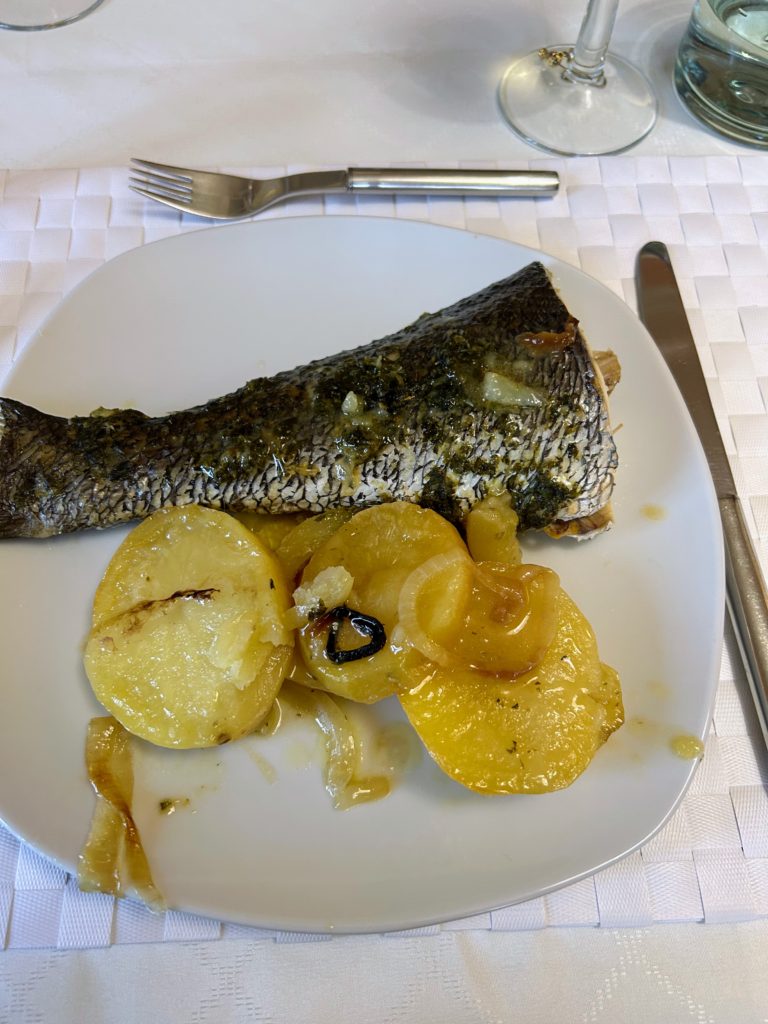
For such a simple dish, it was delicious. The sauce was flavorful, the potatoes and onion paired perfectly. Very lovely meal.
Annette served us some hometown maple syrup with the dessert to finish off the night.

We really enjoyed Spanish food as a whole in our four stops here. The flavours were immediate with our first restaurant in Barcelona. We were greeted with spicy tomato sauce gnocchi’s and mushroom croquettes, and we knew the style was different, as flavours overpowered our mouths. That continued to prove to be the case throughout our time. In Barcelona, a shrimp risotto had Spanish flavours incorporated into the simply plated meal. In Madrid, we learned what “river style,” fish is (its just basted in so much butter. Literally swimming in it. No sides either). But the flavours of the ingredients were pronounced there.
Our best meal in Spain came in Barcelona. We had breakfast at a produce and restaurant market, and ordered three large seafood tapas. Octopus, scallop and calamari. It was all cooked perfectly, and each seafood was seasoned appropriately to highlight the flavour of the meat itself. There is a focus on fresh in Spain.
The food is good but like everywhere in Europe, its fairly monotone in its curation and we were ready for new flavours near the end of our journey. There is a heavy emphasis on seafood and potatoes everywhere you go. We are ready to try Portuguese food and go to another continent for something different. But in the mean time, I am going to find myself some dumplings for dinner.

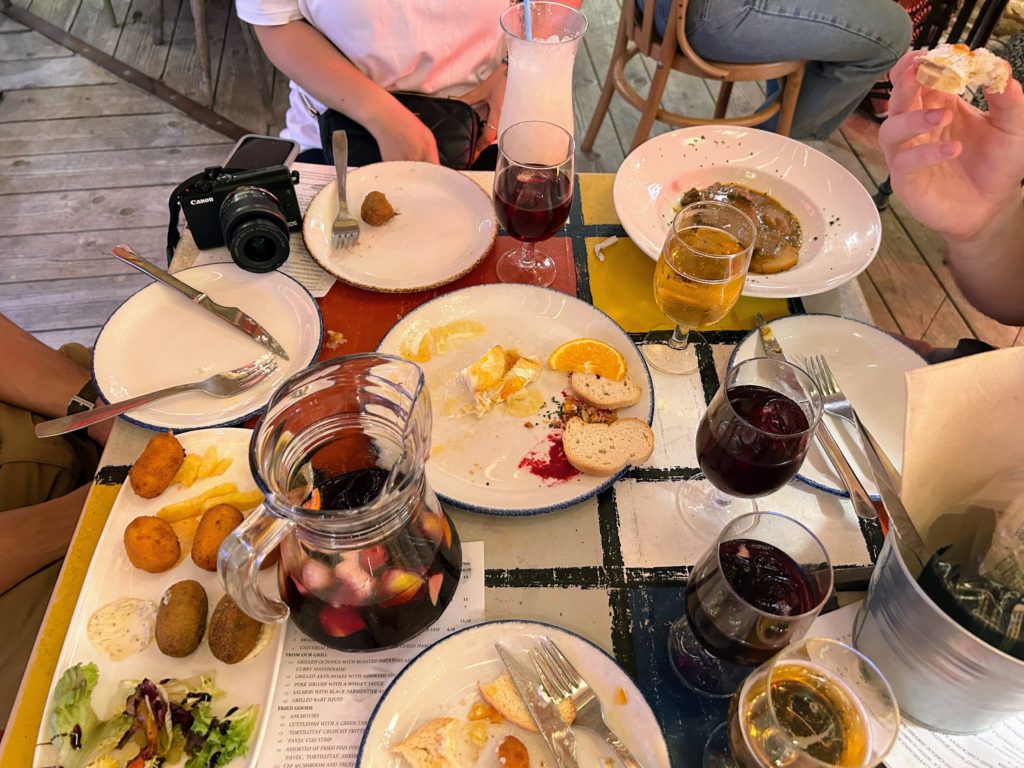
Think that would be a neat experience to be inside a private home. Calgary seems to be a popular place to come from!
Kudos for embracing the local cuisines. Food culture can often be overlooked when travelling, well done.
Looks delicious!
Your cooking adventures are such a lovely activity to share together!